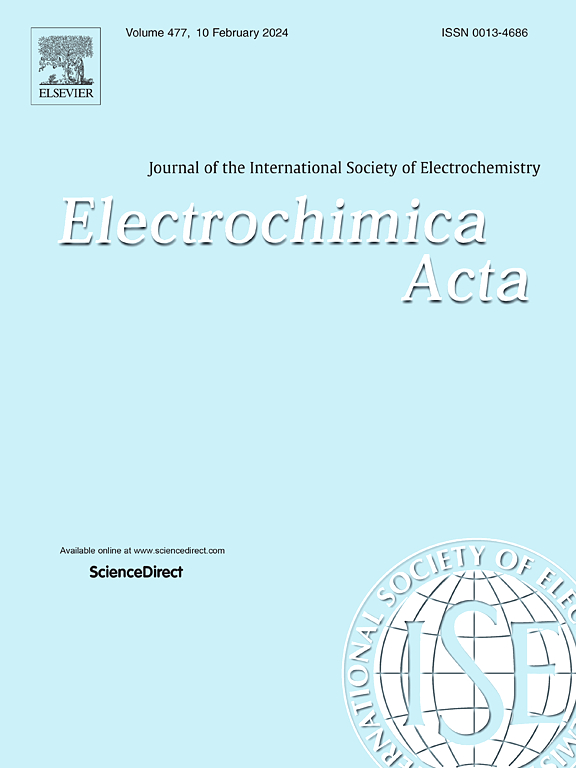High-performance carbon nanofibers derived from polyazomethine and lignin: Structural and electrochemical insights for energy storage applications
IF 5.6
3区 材料科学
Q1 ELECTROCHEMISTRY
引用次数: 0
Abstract
This study presents the fabrication and electrochemical evaluation of polyazomethine (PAM)/lignin-derived carbon nanofiber (CNFs) as free-standing, heteroatom self-doped electrodes optimized through iodine stabilization and high-temperature carbonization. PAM containing thiophene and ether linkages was electrospun with lignin into nanofibers, followed by thermal treatment at 700–900 °C to investigate the impact of structural modifications on electrochemical performance. Microstructural analyses confirmed that carbonization at 900 °C promoted graphitization, leading to an increase in electrical conductivity (11.38 S/cm) and the formation of a mesoporous structure with a high specific surface area (101.4 m2/g). Electrochemical characterization revealed that CNFs, which were carbonized at 900 °C, exhibited superior specific capacitance (165.2 F/g at 0.5 A/g), energy density (24.75 Wh/kg), and power density (250 W/kg). The CNF also demonstrated excellent stability, retaining 89.6 % of its initial capacitance after 4000 charge-discharge cycles. Electrochemical impedance spectroscopy confirmed that CNF-900 had the lowest charge transfer resistance and internal resistance, facilitating efficient ion and electron transport. The incorporation of lignin contributed to the formation of a hierarchical porous network, further improving electrochemical performance. These findings highlight the potential of PAM/lignin-derived CNFs as sustainable, high-performance electrode materials for next-generation energy storage applications.


聚亚甲胺和木质素衍生的高性能纳米碳纤维:储能应用的结构和电化学见解
本研究介绍了聚亚甲基(PAM)/木质素衍生的碳纳米纤维(CNFs)的制备和电化学评价,该材料是通过碘稳定和高温碳化优化的独立杂原子自掺杂电极。将含有噻吩和醚键的PAM与木质素一起电纺成纳米纤维,然后在700-900℃下进行热处理,研究结构修饰对电化学性能的影响。显微结构分析证实,900°C的碳化促进了石墨化,导致电导率增加(11.38 S/cm),并形成了具有高比表面积(101.4 m2/g)的介孔结构。电化学表征表明,900℃炭化后的CNFs具有优异的比电容(0.5 A/g时165.2 F/g)、能量密度(24.75 Wh/kg)和功率密度(250 W/kg)。CNF还表现出优异的稳定性,在4000次充放电循环后仍保持89.6%的初始电容。电化学阻抗谱证实CNF-900具有最低的电荷转移电阻和内阻,有利于离子和电子的高效传递。木质素的掺入有助于形成分层多孔网络,进一步提高电化学性能。这些发现突出了PAM/木质素衍生CNFs作为下一代储能应用的可持续、高性能电极材料的潜力。
本文章由计算机程序翻译,如有差异,请以英文原文为准。
求助全文
约1分钟内获得全文
求助全文
来源期刊

Electrochimica Acta
工程技术-电化学
CiteScore
11.30
自引率
6.10%
发文量
1634
审稿时长
41 days
期刊介绍:
Electrochimica Acta is an international journal. It is intended for the publication of both original work and reviews in the field of electrochemistry. Electrochemistry should be interpreted to mean any of the research fields covered by the Divisions of the International Society of Electrochemistry listed below, as well as emerging scientific domains covered by ISE New Topics Committee.
 求助内容:
求助内容: 应助结果提醒方式:
应助结果提醒方式:


